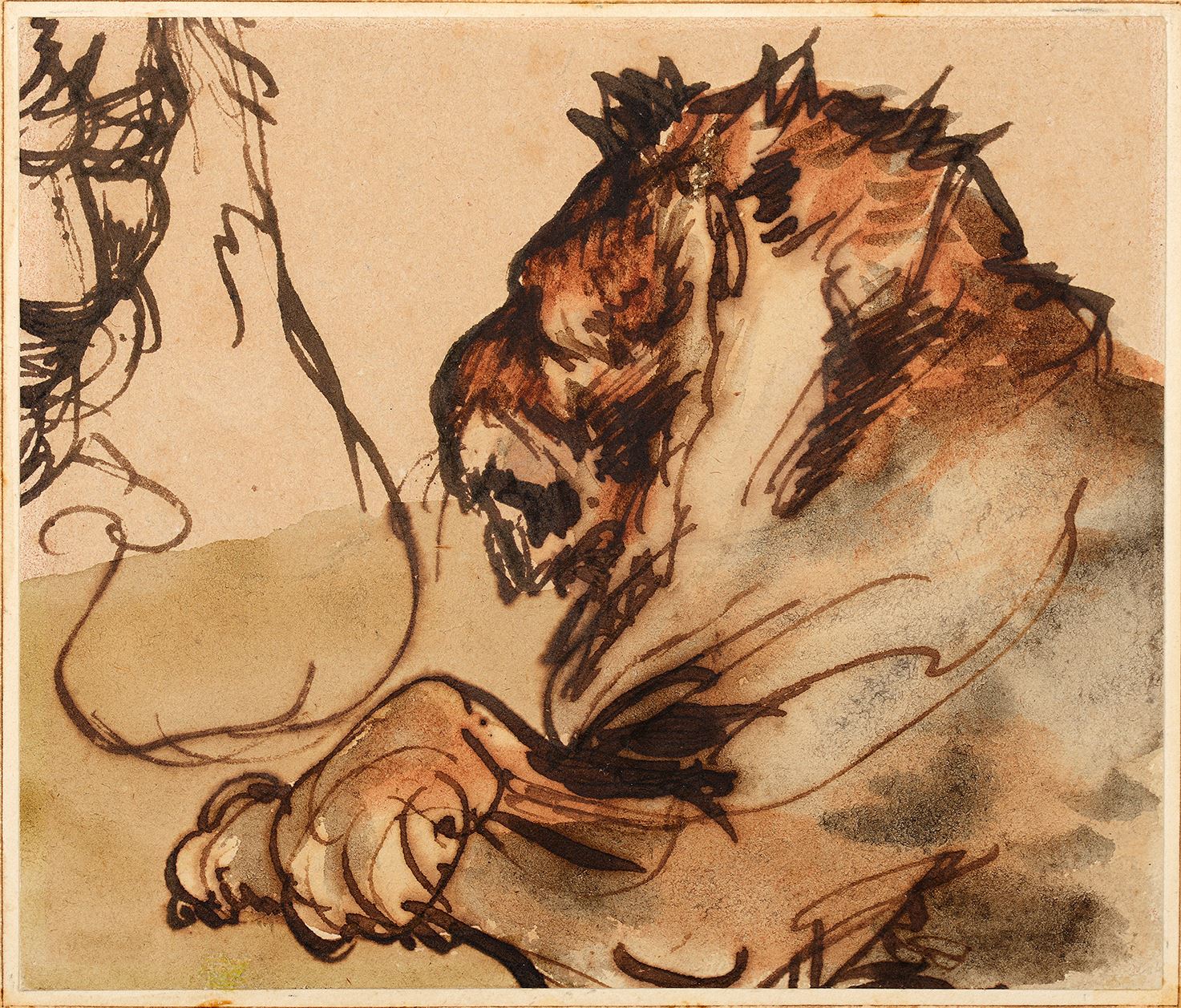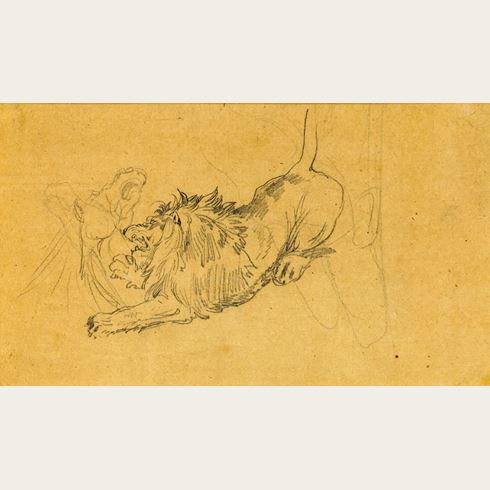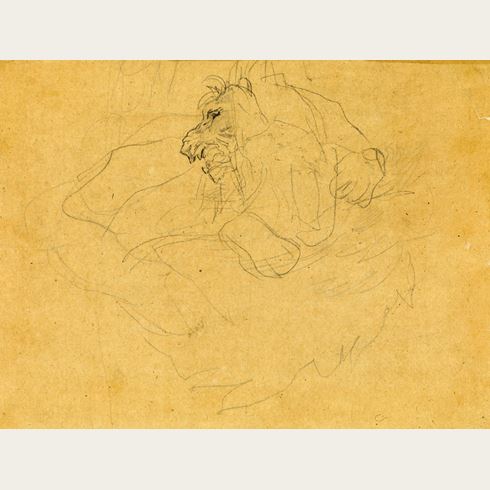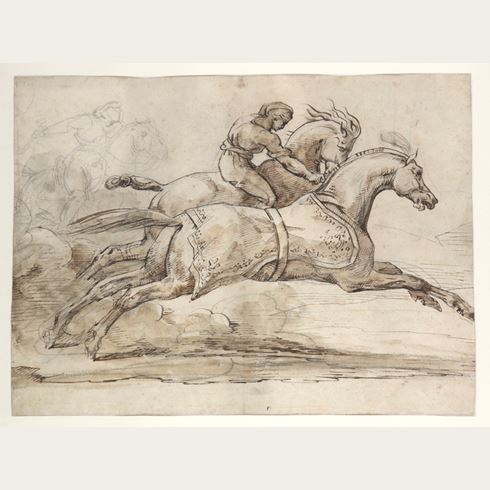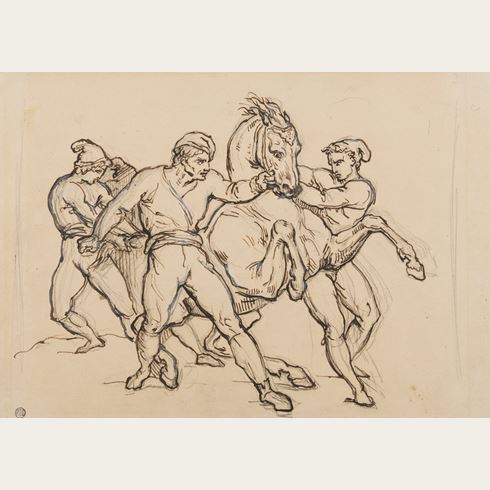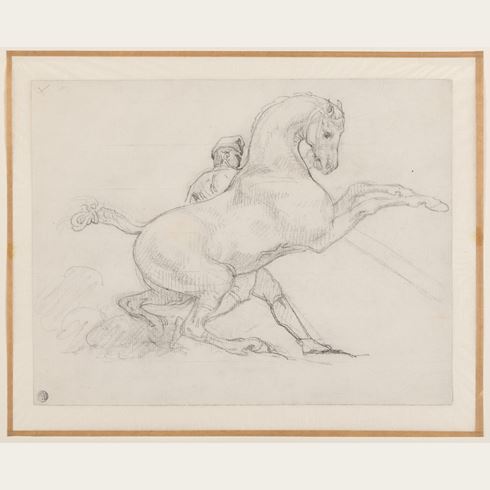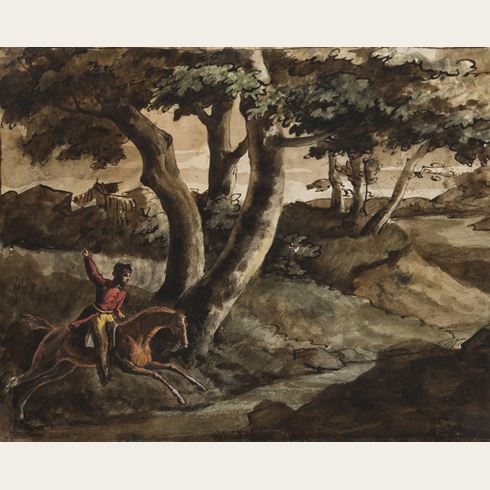Théodore GERICAULT
(Rouen 1791 - Paris 1824)
Study of a Lion at Rest
Laid down.
99 x 117 mm. (3 7/8 x 4 5/8 in.)
This small but powerful drawing of a lion by Gericault, almost certainly drawn from life, probably dates from the artist’s stay in London in 1820 and 1821. Inspired by the works of Stubbs, Edwin Landseer and James Ward, Gericault made several drawings after wild animals in the London Zoo, with a particular emphasis on lions. Most of his surviving studies of lions seem to have been trimmed from larger sheets, and it has been suggested that many of them may have once been part of a sketchbook used by the artist during his English period.
Among stylistically comparable watercolour studies of lions by Gericault are a drawing of a Lion and Lioness in the Louvre and a Study of a Lion in the Musée des Beaux-Arts, Dijon. Seated lions, depicted in profile to the left, are also found in drawings executed in pen alone, such as a drawing in the Musée Bonnat-Helleu in Bayonne and a sheet of studies in the Ecole des Beaux-Arts in Paris, while a similar head of a lion in profile occurs in a black chalk drawing of the heads of two lions in the Musée Bonnat-Helleu. A small pencil sketch of the head of a seated lion facing left, in a private collection, is close to the present sheet in composition.
As Lorenz Eitner has noted, ‘Géricault’s life studies of lions, tigers and leopards are numerous and difficult to date. On grounds of style, the many rapid pencil sketches and the occasional, more elaborately worked up wash and watercolour drawings would seem to fit best into the English years, or the period immediately after…These splendidly realistic pencil sketches, finished with broad washes of watercolour, exemplify – as impressively as any of his human subjects of the time – his powers of physiognomic observation.’
The first owner of this drawing was the painter Louise Marie Becq de Fouquières (1824-1891), the youngest sister of the painter Alfred De Dreux, a disciple of Gericault. In 1847, following the death of her elder sister Elise the previous year, Louise married Elise’s widowed husband, Aimé Napoléon Victor Becq de Fouquières. Louise Becq de Fouquières studied with the painter Isidore Pils and exhibited her work at the Salons between 1857 and 1884. Among her closest friends was Gericault’s natural son, Georges-Hippolyte Gericault (1818-1882), with whom she maintained an extensive correspondence, and from whom she may have acquired this drawing. The present sheet was lent by her to an exhibition at the Ecole des Beaux-Arts in Paris in 1884, when it was one of four small drawings framed together. These drawings were eventually inherited by her grandson, André de Fouquières (1875-1959).
Provenance
Louise Marie Becq de Fouquières, Paris
By descent to her grandson, André de Fouquières, Paris
Georges Renand, Paris
Thence by descent until 1988
Renand sale, Paris, Hôtel Drouot, 15 March 1988, lot 25
Private collection.
Literature
Exhibition

